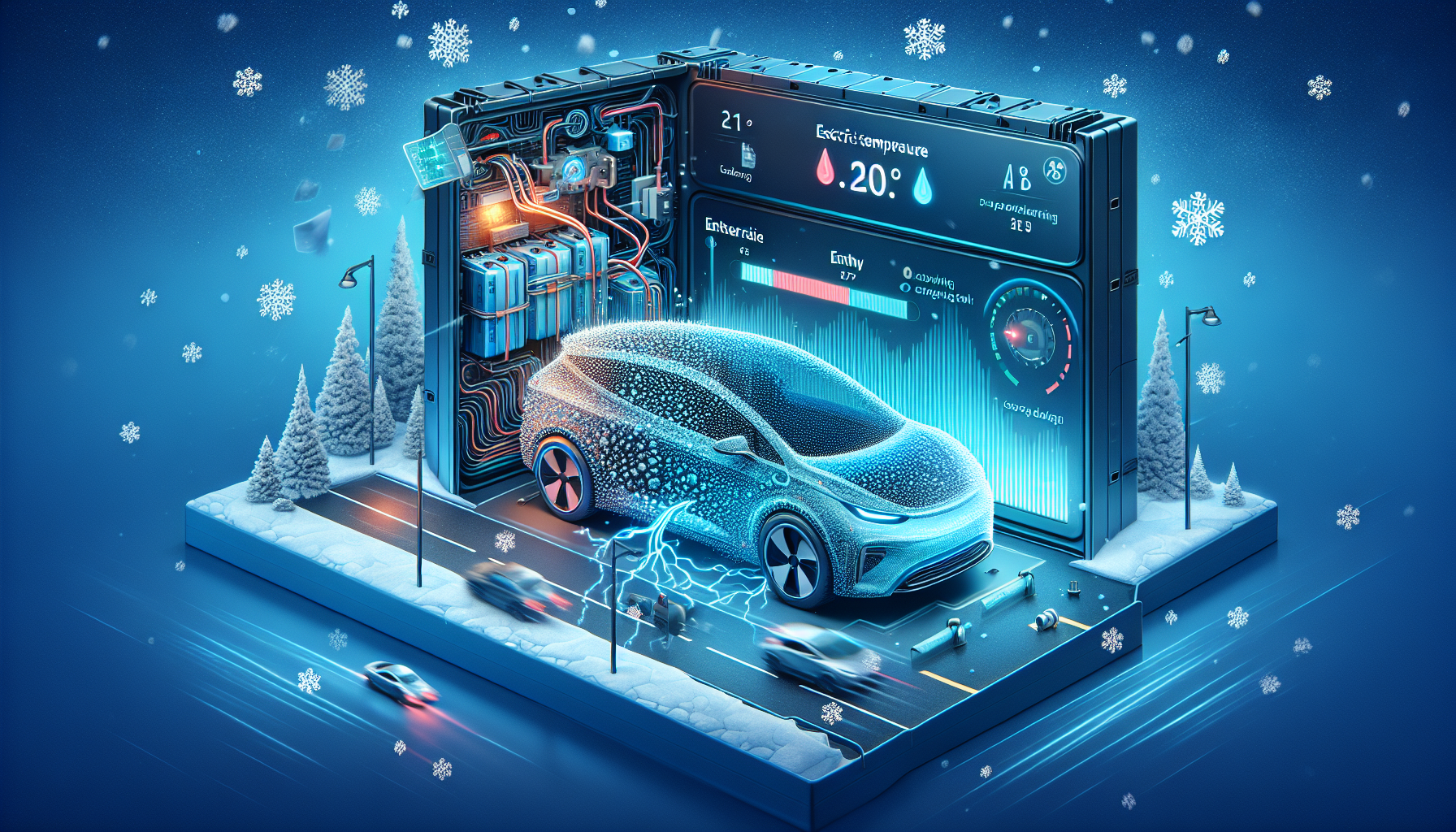Why Do Electric Vehicle Batteries Deplete More Quickly in Cold Weather?
As electric vehicles (EVs) become an increasingly familiar presence on the roads, owners are learning the intricacies of EV operation. One major hurdle that becomes evident during the winter season is the significant drop in battery efficiency. This reduction in performance, which can result in a 20-30% decrease in range, highlights the essential connection between temperature and battery functionality. Let’s explore the reasons behind this phenomenon and examine the steps EV manufacturers are taking to tackle the issue.
The Science of Lithium-Ion Batteries and Cold Temperatures
Functionality of Lithium-Ion Batteries
The majority of contemporary EVs are powered by lithium-ion batteries. These batteries generate and store energy through chemical reactions involving the transfer of lithium ions between the anode and cathode. However, these reactions are highly susceptible to temperature changes. When temperatures fall, the internal resistance of the battery escalates, hindering the movement of lithium ions. This slowdown in chemical activity diminishes the battery’s capacity to effectively store and distribute energy.
Impact of Electrolytes in Cold Conditions
Moreover, low temperatures adversely affect the electrolyte in the battery, which is the liquid or gel that aids in the transfer of lithium ions. As temperatures decrease, the electrolyte thickens, which further obstructs energy movement. The outcome? A significant decline in battery performance and a reduced driving range.
Winter’s Practical Effects on EVs
While the scientific explanation accounts for decreased battery efficiency in cold conditions, winter also alters driver behavior. EVs not only depend on their batteries for propulsion but also for operating auxiliary systems like heating and defrosting. Unlike traditional internal combustion engine vehicles (ICEVs), which utilize surplus heat from the engine for cabin warming, EVs require additional energy from the battery to warm the cabin, defrost windows, and power heated seats or steering wheels.
This increased demand for energy puts extra pressure on the battery, exacerbating the reduction in range. For instance, during a snowstorm or when temperatures plunge below zero, the necessity to remain warm and ensure visibility can drastically limit how far an EV can travel on a single charge.
Innovations to Enhance EV Performance in Cold Conditions
Preconditioning Systems for Better Range
EV manufacturers recognize these cold-weather challenges and have introduced solutions to alleviate them. A vital feature is preconditioning systems. These systems enable owners to warm up their vehicle’s battery and interior while still connected to a charger. This ensures that the battery begins at an optimal temperature, preserving range and providing comfort before starting a trip.
Progress in Fast-Charging Technology
Another innovative area is the advancement of fast-charging capabilities for EV batteries. Newer battery varieties can recover up to 185 miles of range in a mere five minutes of charging. This swift charging option is especially beneficial during winter when repeated top-ups may be needed to counteract diminished range.
Tips for EV Owners to Optimize Winter Performance
While manufacturers focus on long-term solutions, EV owners can take measures to enhance battery performance during colder months:
- Utilize Preconditioning: If your EV has a preconditioning feature, use it. Warming the battery and interior while the vehicle is charging can significantly mitigate range loss.
- Plan Shorter Outings: Avoid long drives in freezing conditions. Shorter journeys with frequent recharges can help maintain battery efficiency.
- Garage Parking: Whenever feasible, park your EV in a controlled-temperature space to limit exposure to extreme cold.
- Track Energy Consumption: Be cautious of using energy-heavy functions such as cabin heat and heated seats. Use them sparingly to conserve battery life.
The Future of EV Battery Technology
The EV sector is progressing rapidly, and battery technology is leading this change. Manufacturers are experimenting with solid-state batteries, which are less impacted by temperature variations and offer higher energy density. These innovations could potentially alleviate winter range anxiety in the near future.
Furthermore, thermal management systems are being enhanced to maintain optimal battery temperatures, regardless of outside weather conditions. Thanks to these advancements, the outlook for EVs in cold regions seems increasingly promising.
Conclusion
The performance of EV batteries in frigid weather is a challenge, but it’s one that both consumers and manufacturers are proactively tackling. By comprehending the science behind battery technology and adopting recommended practices for winter driving, EV owners can reduce the adverse effects of low temperatures. At the same time, ongoing improvements in battery development and vehicle technology are set to enhance the reliability of EVs, no matter the season.
Questions & Answers About EV Battery Performance in Cold Weather
1. Why do EV batteries deplete more quickly in cold temperatures?
Cold weather raises the internal resistance of lithium-ion batteries, slowing down the chemical reactions that store and release energy. Additionally, the electrolyte thickens, further impeding energy transfer.
2. What range can an EV lose in freezing temperatures?
Typically, an EV’s range can diminish by 20-30% in cold weather due to decreased battery efficiency and heightened energy requirements for heating.
3. Is preconditioning really beneficial?
Absolutely, preconditioning warms the battery and cabin while charging, thus conserving range and enhancing performance in cold weather.
4. Are certain EV models better equipped for winter?
Some EVs come with advanced thermal management and effective preconditioning systems, making them more suitable for cold climates. It’s advisable to research specific models.
5. What steps are manufacturers taking to boost winter performance?
Manufacturers are developing solid-state batteries, improved thermal management systems, and enhanced charging technologies to tackle the winter driving challenges.
6. How can I maximize my EV’s range in winter?
Use preconditioning, park in warmer setups, limit energy-intensive features like cabin heat, and schedule shorter trips with regular charging.
7. Is it practical to own an EV in colder climates?
Yes, with adequate planning and the use of available technologies, EVs can function well in cold weather. Continuous advancements in battery and vehicle technology are enhancing their practicality.
By staying informed and utilizing the latest advancements, EV owners can confidently face the winter months while reaping the benefits of electric mobility.